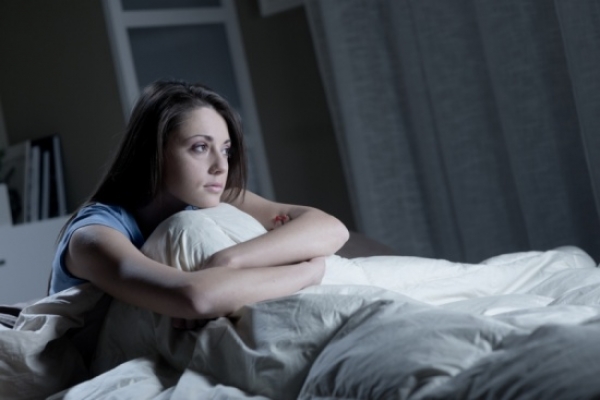Hanna Saadeh - Chronic Insomnia-
Insomnia, which derives from Latin (somnus = sleep & insomnis = sleepless) is a common condition experienced by all humans. When it is chronic, we suffer its consequences of irritability, fatigue, impaired functioning, medical and mental disorders, and increased healthcare costs. Initial Insomnia (i.e. difficulty falling asleep), Terminal Insomnia (i.e. difficulty staying asleep), or combinations of these two basic varieties affect 10-20% of humanity, and half of those affected struggle with Chronic Insomnia. Poor sleep, by causing fatigue and daytime sleepiness, which impair attention and judgment, can have dangerous consequences. Pilots, drivers, doctors, machine operators, soldiers, etc. all can cause great harm when sleep deprived. Familial Malignant Insomnia, a rare genetic disorder resistant to all treatments, is 100% fatal.
Perceived Insomnia is another common disorder, which, as the name implies, is often reported by those who underestimate the time they spend asleep and overestimate the time they spend trying to sleep. In such individuals, unlike those with true insomnia, daytime functioning is usually preserved. In both true and perceived insomnia, Sleep Anxiety plays an enhancing role. Anticipating insomnia and worrying about it causes it to become more pronounced, thus inviting dependence on sleep aids and paving the way for addiction.
The degree of insomnia is proportional to the degree of Heightened Brain Arousal, which always precedes the insomnia. Heightened brain arousal during sleep and wakefulness increases the body’s metabolism, cortisone production, heart rate, brain electrical activity, and brain metabolic energy. This heightened brain arousal can have many causes. Genetic causes are responsible for about half of the chronic insomnia cases whereas environmental, situational, personal, and medical conditions cause the other half. Viewing insomnia as a heightened brain arousal disorder brings it closer to other hyper-arousal disorders such as depression, anxiety, and panic, all of which are common in victims of chronic insomnia.
Circadian Insomnia is a common consequence of sleep rhythm disturbance. Normally, we awaken with daylight and fall asleep at night because darkness causes our brains to produce a hormone called Melatonin, which prepares us for sleep. When this synchrony is disrupted, we start going to sleep earlier or later than normal, but continue to sleep the normal number of hours our bodies need. This de-synchronization commonly occurs at both extremes of life. In the elderly, sleep may come at 8 p.m. and arousal at 4 a.m. because their biological clocks run ahead of the circadian rhythm. In adolescents, sleep may come at 2 a.m. and arousal at 10 a.m. because their clocks run slower. Correcting this de-synchrony can be done by slowly delaying the sleep time in the elderly and slowly advancing the wake up time in the young until they are back in synchrony with the day-night cycle.
The diagnosis of chronic insomnia requires a careful history and physical examination by an experienced physician. Treating the medical causes such as sleep apnea, restless leg syndrome, depression, anxiety, and pain may resolve the insomnia. Treating the nonmedical causes with 6 - 8 sessions of Cognitive Behavior Therapy can produce results as good as or better than the traditional management with medicines.
Medications used as sleep aids are numerous and the choice of the medication should be individualized to maximize comfort and minimize risk. Non-addicting medicines are preferred in patients with history of addictions but this is not an absolute rule. Medicines that do not disturb gait and balance are preferred in the elderly to minimize falls. When medicines cause morning grogginess the dose should be reduced. Non-addicting medicines are always preferable whenever possible.
The potentially addicting sleeping pills, when appropriately prescribed by the experienced physician to the right individual, are safe, effective, rarely addicting, and are seldom abused. They often are the only treatments capable of normalizing life by restoring restful sleep. They may be given intermittently or continuously, for short or for long periods, to induce or maintain sleep, and to rescue sleep when early awakening occurs.
Doxepin, an old antidepressant now approved as a sleeping aid, comes in liquid form with a dropper and can be individually titrated one drop at a time. One ml contains 10 mgs. a small dose compared to the antidepressant dose of 100 to 300 mgs. Each ml makes 21 drops and each drop is about 0.5 mgs. By adjusting the timing and number of drops, one can achieve good sleep without morning grogginess. This is especially useful in the elderly because age makes them more sensitive to sedating medications.








Leave A Comment